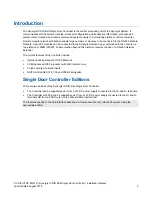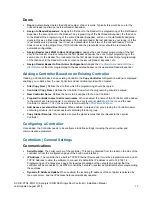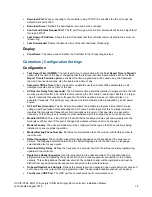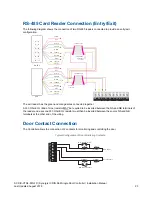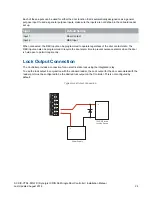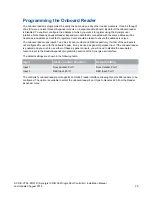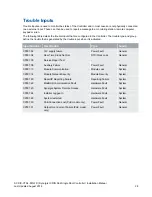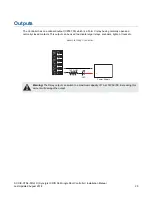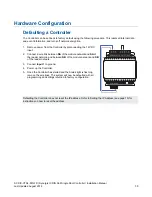
SY-SIX-CTRL-DIN-1D | Synergis IX DIN Rail Single Door Controller | Installation Manual
Last Updated August 2018
17
Doors
Doors
: Automatically creates the defined number of door records. Typically this would be one for the
onboard reader and two per external Reader Expander.
Assign to Reader Expanders
: Assigns the first door to the Reader One programming of the first Reader
Expander, the second door to the Reader Two programming of the first Reader Expander, the third door
to the Reader One programming of the second Reader Expander, and so on. If automatically assigning
doors in this way, either make the address of the onboard reader the last address in your range, or if this
is not practical use a 'dummy' door to act as a placeholder for port two of the onboard reader. Port two
does not exist on the Single Door (1D) Controller and the placeholder door should be removed after
automatic configuration.
Assign Reader Lock PGM to Door Configuration
: Assigns the Lock Output programming of the first
door to the Reader One lock output on the first Reader Expander, the Lock Output programming of the
second door to the Reader Two lock output on the first Reader Expander, the Lock Output programming
of the third door to the Reader One lock output on the second Reader Expander, etc.
Assign Reader Beeper to Door Alarm Configuration
: Assigns the
Pre Alarm Output
and
Left Open
Alarm Output
of the door programming to the associated beeper on the associated Reader Expander.
Adding a Controller Based on an Existing Controller
If adding a Controller based on an existing Controller, the
Copy Controller
configuration window is displayed,
enabling you to define how the new Controller and associated records will be created:
Site (Copy From)
: Defines the site from which the programming should be copied.
Controller (Copy From)
: Defines the Controller from which the programming should be copied.
New Controller Name
: Defines the name to be assigned to the new Controller.
Prepend Controller name to all record names
: When enabled, the name of the Controller will be added
to the start of each record name. For example, if a door record is called
Main Entrance
and the new
Controller is named
CTRL2
, the new door record would be
CTRL2 Main Entrance
.
Add Access Level and Door Group
: When enabled, creates a door group (using the Controller name)
containing all doors, and an access level containing this door group.
Copy Global Records
: When enabled, copies the global records that are relevant to the original
Controller.
Configuring a Controller
Once added, the Controller needs to be configured to define settings including the serial number and
communication parameters.
Controllers | General Settings
Communications
Serial Number
: The serial number of the controller. This can be obtained from the label on the side of the
controller or from the configuration page of the built in web interface.
IP Address:
The controller has a built in TCP/IP Ethernet Device and it must be programmed with a valid
TCP/IP Address to allow the software to connect. By default the IP address is set to 192.168.1.2.
Programming an IP address (see page 15) requires knowledge of the network and subnet that the
controller will be connected to. ALWAYS consult the network or system administrator before programming
these values.
Dynamic IP Address Update
: When enabled, the incoming IP address of the controller is detected by
the event server, and the IP address field is automatically updated.



